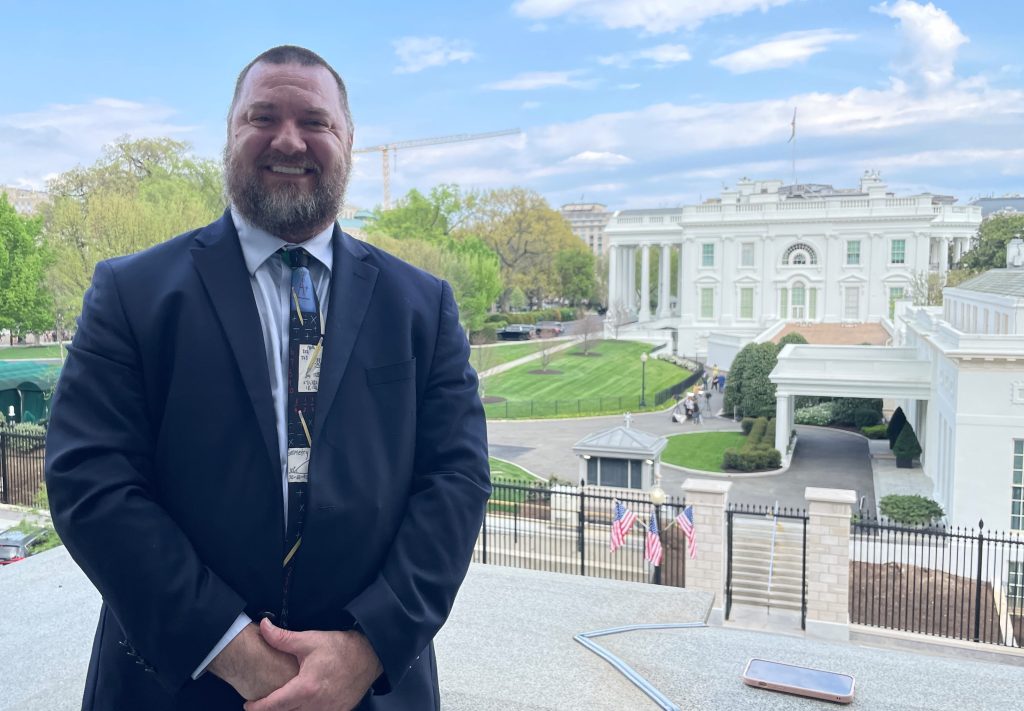
At the invitation of the Office of the Vice President, your NCSM President Paul Gray attended the Space STEM Forum at the Eisenhower Executive Office Building in Washington, DC, on April 6, 2023.
During this forum, leaders from STEM education and STEM industry, alongside federal policymakers from the U.S. Department of Education, U.S. Department of Labor, U.S. Department of Commerce, and others, engaged in discussion about the present and future needs of a space-based STEM workforce.
NASA is currently preparing for and planning the Artemis Program which, according to the NASA Artemis website, will “land the first woman and first person of color on the Moon.” The four-person crew of the Artemis 2 mission also includes a Canadian astronaut, marking the first international astronaut to journey to the Moon. NASA intentionally selected a diverse crew because the Biden-Harris administration has made it a priority that the next generation space program should include people who look like all of America. And Canada.
I have several thoughts rolling around in my head as I reflect on what I heard and saw at this event. First, I am very proud that NCSM has staked equity as a priority and it was nice to hear national leaders in government, education, and industry state that it is essential that our space STEM workforce look like all of America. Organizations, businesses, and agencies are actively seeking well-qualified candidates so that today’s students see themselves in these positions. We all know that representation matters, so if a young Indigenous girl sees Indigenous astronauts, scientists, and pilots, she will believe that it’s possible for her to do that if she wants to.
Secondly, I learned that my view of the “space program” is quite narrow. Like most Americans of my generation, when I think of the space workforce, I think of NASA, astronauts, and literal rocket scientists. I also think of my cousin, an African-American engineer who designs rocket safety features for NASA. But the Artemis space program is different than the Apollo missions or the Space Shuttle program.
Artemis’s stated goal is to create a permanent presence on the Moon. Read that again.
To do this, it will take a variety of commercial, industrial, and scientific partners. The Space STEM workforce extends well beyond astronauts and rocket scientists. We will need construction workers, avionics experts, and welders. We will need lawyers, entrepreneurs, and policy folks to create space law, space business, and space policy. We will need agricultural scientists and agricultural workers to study how to grow food in space and use data collected from space to improve Earth-based agriculture as climate change progresses. We will need climate scientists who understand how to use space-based data to help make Earth-based settlements more resilient.
Our challenge is two-fold. One, we need to broaden our own understanding of what it means to pursue a career in space STEM. Two, we need to work with intentionality to ensure that this workforce represents all of America and Canada, not just those who have been traditionally centered in American and Canadian science.
NCSM views equity as a way of thinking when teaching and learning mathematics. We agree with Rochelle Gutierrez when she defines equity as “the inability to predict mathematics achievement and participation based solely on student characteristics such as race, class, gender, beliefs, or language proficiency” (2007).
Let’s apply this definition of equity as we work to create a STEM workforce, particularly a space STEM workforce into the future and beyond that harnesses the talents of Americans and Canadians from all walks of life. I can’t think of a way to build a stronger nation.
Equity is the inability to predict mathematics achievement and participation based solely on student characteristics such as race, class, gender, beliefs, or language proficiency.
Rochelle Gutierrez
Reference
Gutiérrez, R. (2007). (Re)defining equity: The importance of a critical perspective. In N. S. Nasir & P. Cobb (Eds.), Improving access to mathematics: Diversity and equity in the classroom (pp. 37-50). New York, NY: Teachers College Press.
